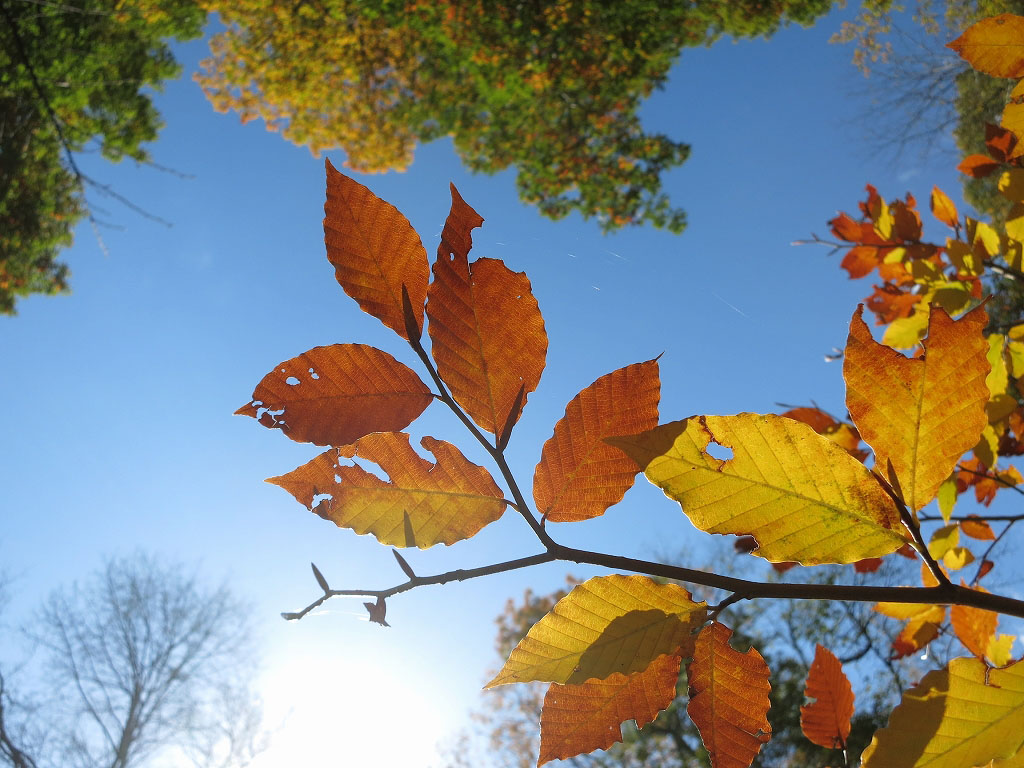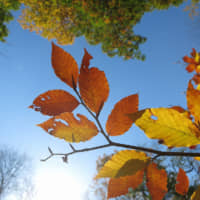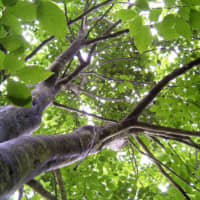Every month, at least once, I get invited to somewhere in Japan to talk about forests and woodland. Even more often, people visit our woodland here in northern Nagano Prefecture and ask for a talk in our Afan Woodland Trust Centre before they are taken on a walk among the trees.
I have always been interested in nature, and as I was originally British (becoming a Japanese citizen in 1995), I was familiar with many of the trees I saw when I first started hiking Japan's mountains in 1962 — among them the beech.
However, I was truly awed by the magnificent beauty of ancient forests of native Japanese beech (Fagus crenata) that I came across here.
Especially in the years following World War II, the government's Forestry Agency had encouraged the destruction of beech forests and their replacement with conifers. It claimed the beech, known as buna in Japanese, was a useless tree — which is utter nonsense.
Admittedly, the wood easily rots if it is left outside and, as it's very flexible, it is not suitable for building. On the other hand it makes excellent furniture, indoor flooring and bowls, while in Britain it used to be sought after for smoking herrings to make kippers.It is also a tremendously important tree in terms of wildlife and water management.
A healthy specimen can grow for hundreds of years and reach 35 meters high, with its smooth bark usually beautifully mottled with the pastel grays and greens of lichens. The pale young, serrated leaves are edible, and I often use them in salads before they turn darker green and tough.
Interestingly, beeches are what is known as monoecious — meaning they have male flowers bearing long, tasseled catkins and female ones that receive pollen from them carried by the wind from their own or, preferably, other trees. The resulting small, rather hairy and woody fruits called beechmast contain one or two seeds, called nuts, that are delicious to eat and form a vital part of the diet of many creatures from squirrels to bears.
Beeches had been totally eliminated from the first land I bought up here outside Kurohime that would later become part of the trust's woodlands, but as digging soon uncovered lots of old beech mast husks, I knew they had once been there. So, after consulting with local forestry experts, I got permission to collect beech saplings to reintroduce to the land. The oldest of those are now around 36, and I hope that in about 10 years they will begin to bear fruit.
I feel tremendously happy when I see these young beeches, especially in the rain when they funnel water down along their branches and trunks to the roots.
This is partly what makes the beech so important for water conservation. Another reason is that fallen beech leaves and deadwood makes a soft, absorbent humus that is a marvelous sponge and great for all kinds of mushrooms.
Although I am grateful for the interest, and even more so for the gratuities I sometimes receive for talking about woodlands and wildlife, I become more and more discouraged when talking to Japanese people, especially young ones, who know at the most 10 kinds of trees found here — and even those they cannot describe.
It is really beginning to bother me that most people who come to listen to me don't really have much of a clue what I'm talking about. And that's despite nearly 70 percent of Japan being covered by trees, and around 80 percent in Nagano, whether conifer plantations, coppiced woodland or old-growth forest.
Even worse, I find this lack of vocabulary is becoming more apparent every year, especially among university students.
The same goes for marine mammals. Older Japanese may bang on and on about their whaling culture, but I gave up trying to discuss whales and whaling when I realized that very few knew the difference between a blue, a humpback or an orca.
Once, on a cruise ship off Iwo To (aka Iwo Jima in the Ogasawara Islands), we'd all just been on deck watching humpbacks breaching and splashing when some women from Osaka came up to the table where I was sipping beer and asked if there was any difference between dolphins and whales.
I pontificated for a few minutes, describing toothed whales and baleen whales as the women nodded wisely to each other. Then when I stopped, one of them turned to the others and said: "So you see, dolphins just keep on eating and eating and grow up to be whales."
I might as well have been speaking Swahili. My daughter, who was with me, saw the look on my face, kicked me under the table and whispered, "Daddy, be nice!"
It was trying, but I tried.





